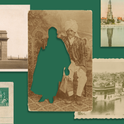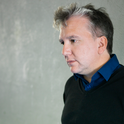Katyn, the Oscar-nominated film by the octogenarian Polish director Andrzej Wajda that opens in the UK today, can be seen as a 20th century version of the story of Antigone - the woman who defies the city-state of Thebes by giving her dead brother a fitting burial. In this version of the myth, there are thousands of dead who have already been buried—by bulldozers. They make a different, even more basic demand of the living: to speak the truth about how they died and in particular at whose hands. In Wajda's film, Creon, the king of Thebes, is both Hitler and Stalin.
Katyn tells the story of the massacre by the Red Army of 20,000 Polish officers and intellectuals in a forest near Smolensk in 1940. The massacre—in which Wajda's own father was killed—was discovered by the Germans three years later after they had invaded the Soviet Union. Joseph Goebbels immediately used it for propaganda purposes: the Nazis saw in it the chance to create fear about Bolshevik domination of Europe and to create a split between the allies. The Russians, meanwhile, blamed the fascists for the massacre. It was only after the end of the cold war that the Kremlin admitted the truth.
The film begins in mid-September 1939: the Soviet Union has invaded Poland from the east two weeks after the Germans invaded from the west. From the opening scene, which shows refugees fleeing eastwards from the Nazis meeting refugees fleeing westwards from the Red Army, the film creates a perfect symmetry between the two invaders with their different yet similar totalitarian ideologies. Soviet and Nazi propaganda mirror each other: the Russians claim that the way the Polish officers were killed—a shot to the back of the head—is the Gestapo way; the Nazis claim it is the Bolshevik way.
In Katyn there are multiple Antigones: women struggling with the loss of brothers, husbands and sons killed in Katyn. But it is above all Agnieszka, the wife of an air force lieutenant killed in the massacre, who emerges as the film's tragic heroine. She sells her hair to an actress (an Auschwitz survivor who is about to play Antigone) to pay for a gravestone for her dead husband. But even to claim, as she does, that he died in April 1940—in other words before the German invasion of the Soviet zone of occupation in which the massacre took place—becomes a subversive act.
The film, shot in shades of drab grey, is deeply moving. But its silences are also significant. Twentieth-century central European history is filled with stories of suffering experienced and inflicted. The Russians suffered at the hands of the Germans but inflicted suffering on the Poles. The Poles suffered terribly at the hands of the Germans and the Russians, but also played a more ambiguous role in the Holocaust (see Claude Lanzmann's Shoah). Although much of the film’s iconography—camps and trains—evokes the Holocaust, the Jews are entirely invisible (the Auschwitz survivor may or may not be Jewish). Ultimately, in mythologising Polish victimhood while remaining silent about the suffering of others, the film does little more than setting one collective memory against another.
Katyn is showing in UK cinemas from today












